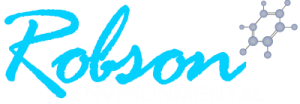What is Occupational Hygiene?
Occupational Hygiene is generally defined as:
‘the art and science dedicated to the Anticipation, Recognition, Evaluation, Communication and Control of environmental stressors in, or arising from, the work place that may result in injury, illness, impairment, or affect the well being of workers and members of the community. These stressors are normally divided into the categories Biological, Chemical, Physical, Ergonomic and Psychosocial’ (Australian Institute of Occupational Hygiene – AIOH).
I believe a hazard may be present at work or in the home. What information do I need to provide?
Please provide the following information to our Occupational Hygienists:
- Your contact details
- The nature and identification of the suspected hazard (chemical, biological or physical)
- How long has the hazard been present for?
- Where the hazard is located?
- Are there any suspected or known health effects?
- Whether there are any special requirements/considerations that Robson’s need to know about (i.e. special PPE or clothing/footwear requirements to visit your workplace, public place or home)
- Have there been any reported injuries or complaints?
- What questions do you want answered?
- What outcomes are you hoping to achieve?
How do you test?
When a client contacts us, they advise us of the suspected contaminant to test for. This is important because we cannot conduct testing unless we know what to look for! Occupational Hygienists use a broad range of techniques depending on the type of hazard. Each job requires a tailored sampling method and careful selection of equipment which might involve taking personal measurements (e.g. connect measuring machines on workers for a short time) or static measurements where equipment is situated in the workplace environment for a set period of time. Once all the measurements are complete, an Occupational Hygienist will carefully collect and transport the samples back to the laboratory for analysis.
How long does it take to get results?
Depending on what is being tested, it may sometimes take up to three weeks to complete the analytical process, which is undertaken in a laboratory. Once completed Robson’s can provide a verbal notification of the results which is then followed by a written report that details the work undertaken, methods, results and includes recommendations for further actions.
What do I do if I find mould in my home?
The first step to take if you find mould in your home is to undertake cleaning. If the area of mould is small you can clean it yourself, but large areas of mould are generally best left to professional cleaners.
Useful advice on what to do if you find mould and want to clean it yourself can be found at the Victorian Government Health Website: https://www.betterhealth.vic.gov.au/health/conditionsandtreatments/mould-removal-at-home
In some cases there may be a benefit to undertaking mould sampling, particularly if residents are experiencing adverse health effects suspected to be from mould exposure. Mould sampling can identify species of mould which may be known to have negative effects on human health.
Mould sampling may also be useful when mould contamination is suspected but is not visible, or if mould contamination continues to reoccur after cleaning. Robson Environmental can also undertake visual inspections for mould (e.g. for insurance purposes) and can undertake moisture source assessments.
Can you test my tap/tank/bore water?
Robson Environmental can undertake sampling and testing for both micro-organisms and chemicals in any water, and can assess compliance with the standards set out in the Australian Drinking Water Guidelines (2011).
The ACT Health Protection Service can also advise on health issues associated with private drinking water supplies and can arrange to have your water tested. Further information on drinking water quality and the ACT Health Protection Service can be found on their website: http://www.health.act.gov.au/publications/fact-sheets/drinking-water-private
Can you assess fume cabinets/exhaust equipment?
Robson Environmental can assess the functionality and compliance of fume cabinets and other exhaust equipment with the AS/NZS 2243.8-2014 standard, and provide advice on exposure controls in certain circumstances.
For routine (annual etc.) compliance assessment we would advise you contact a NATA accredited fume cabinet mechanical testing facility. A searchable list of facilities is available on the NATA website.
Resources
Robson Environmental can investigate a wide range of hazards in workplaces or privately (e.g. in residential premises). Community, public health and particular environmental concerns however fall into the area of Government regulation (cooling tower registration, communicable diseases, public water supply, food safety, etc). Below is a list of resources and links to help guide your enquiry:
ACT Public Health issues – If you have a member of the community and have a public health issue in the ACT you should refer to the ACT Government Health Protection Service website: http://www.health.act.gov.au/health-services/population-health/health-protection-service/
ACT Safety Regulator – for advice on workplace health and safety issues in the ACT, please refer to the WorkSafe ACT website: http://www.worksafe.act.gov.au/health_safety
Federal Safety Regulator – for issues on workplace health and safety issues in the Federal jurisdiction, please refer to the Comcare website: www.comcare.gov.au
